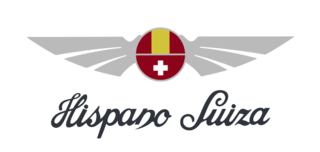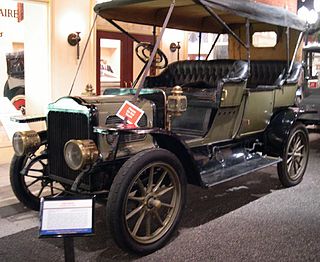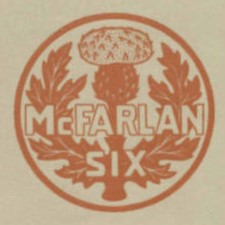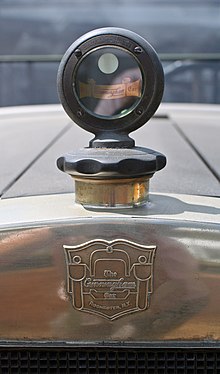
Studebaker was an American wagon and automobile manufacturer based in South Bend, Indiana, with a building at 1600 Broadway, Times Square, Midtown Manhattan, New York City. Founded in 1852 and incorporated in 1868 as the Studebaker Brothers Manufacturing Company, the firm was originally a coachbuilder, manufacturing wagons, buggies, carriages and harnesses.
The Locomobile Company of America was a pioneering American automobile manufacturer founded in 1899, and known for its dedication to precision before the assembly-line era. It was one of the earliest car manufacturers in the advent of the automobile age. For the first two years after its founding, the company was located in Watertown, Massachusetts. Production was transferred to Bridgeport, Connecticut, in 1900, where it remained until the company's demise in 1929. The company manufactured affordable, small steam cars until 1903, when production switched entirely to internal combustion-powered luxury automobiles. Locomobile was taken over in 1922 by Durant Motors and eventually went out of business in 1929. All cars ever produced by the original company were always sold under the brand name Locomobile.

The Daimler Company Limited, before 1910 known as the Daimler Motor Company Limited, was an independent British motor vehicle manufacturer founded in London by H. J. Lawson in 1896, which set up its manufacturing base in Coventry. The company bought the right to the use of the Daimler name simultaneously from Gottlieb Daimler and Daimler-Motoren-Gesellschaft of Cannstatt, Germany. After early financial difficulty and a reorganisation of the company in 1904, the Daimler Motor Company was purchased by Birmingham Small Arms Company (BSA) in 1910, which also made cars under its own name before the Second World War. In 1933, BSA bought the Lanchester Motor Company and made it a subsidiary of the Daimler Company.

Marmon Motor Car Company was an American automobile manufacturer founded by Howard Carpenter Marmon and owned by Nordyke Marmon & Company of Indianapolis, Indiana, US. It produced luxury automobiles from 1902 to 1933.

Vanden Plas is the name of coachbuilders who produced bodies for specialist and up-market automobile manufacturers. Latterly the name became a top-end luxury model designation for cars from subsidiaries of British Leyland and the Rover Group, it was last used in 2009 to denote the top-luxury version of the Jaguar XJ (X350).

Hispano-Suiza is a Spanish automotive–engineering company. It was founded in 1904 by Marc Birkigt and Damian Mateu as an automobile manufacturer and eventually had several factories in Spain and France that produced luxury cars, aircraft engines, trucks and weapons. In 1923, its French luxury car arm became a semi-autonomous partnership with the Spanish parent company. In 1946, the Spanish parent company sold all of its Spanish automotive assets to Enasa, a Spanish state-owned vehicle manufacturer, and the French arm continued as an independent aviation engine and components manufacturer under the Hispano-Suiza name. In 1968, Hispano-Suiza was taken over by the aerospace company Snecma, which is now part of the French Safran Group. An attempt to relaunch the marque was made by the company Hispano Suiza Cars associated with the Peralada Group in 2019 with a fully-electric car.

The Brass Era is an American term for the early period of automotive manufacturing, named for the prominent brass fittings used during this time for such features as lights and radiators. It is generally considered to encompass 1896 through 1915, a time when cars were often referred to as horseless carriages.

A steam car is a car (automobile) propelled by a steam engine. A steam engine is an external combustion engine (ECE) in which the fuel is combusted outside of the engine, unlike an internal combustion engine (ICE) in which fuel is combusted inside the engine. ECEs have a lower thermal efficiency, but carbon monoxide production is more readily regulated.

The Peerless Motor Car Company was an American automobile manufacturer that produced the Peerless brand of motorcars in Cleveland, Ohio, from 1900 to 1931. One of the "Three Ps" – Packard, Peerless, and Pierce-Arrow – the company was known for building high-quality luxury automobiles. Peerless popularized a number of vehicle innovations that later became standard equipment, including drum brakes and the first enclosed-body production cars.

Avia Motors s.r.o. is a Czech automotive manufacturer. It was founded in 1919 as an aircraft maker, and diversified into trucks after 1945. As an aircraft maker it was notable for producing biplane fighter aircraft, especially the B-534. Avia ceased aircraft production in 1963.

McFarlan was a luxury American automobile manufactured in Connersville, Indiana, from 1909 to 1928, by the McFarlan Carriage Company and the McFarlan Motor Car Company.

Barley Motor Car Co. was a manufacturer of luxury automobiles in Kalamazoo, Michigan, and Streator, Illinois. It manufactured the Roamer automobile (1916–29) and briefly, the Barley (1922–24), and the Pennant (1924–25).

Bristol Commercial Vehicles was a vehicle manufacturer located in Bristol, England. Most production was of buses but trucks and railbus chassis were also built.

The official founding date of the German motor vehicle manufacturer BMW is 7 March 1916, when an aircraft producer called Bayerische Flugzeugwerke was established. This company was renamed to Bayerische Motoren Werke (BMW) in 1922. However, the BMW name dates back to 1917, when Rapp Motorenwerke changed its name to Bayerische Motoren Werke. BMW's first product was a straight-six aircraft engine called the BMW IIIa. Following the end of World War I, BMW remained in business by producing motorcycle engines, farm equipment, household items and railway brakes. The company produced its first motorcycle, the BMW R32, in 1923.
MÁG stands for "Magyar Általános Gépgyár Rt". It was the most prevalent Hungarian vehicle manufacturer before World War II, and was based in Budapest. Its roots date back to 1901, when Podvinecz & Heisler, started assembling Austrian Leesdorfer cars - themselves being French Amédée Bollée cars built under license.

The Maudslay Motor Company was a British vehicle maker based in Coventry. It was founded in 1902 and continued until 1948 when it was taken over by the Associated Equipment Company (AEC) and along with Crossley Motors the new group was renamed Associated Commercial Vehicles (ACV) Ltd.

The Cunningham automobile was a pioneering American production automobile, one of the earliest vehicles in the advent of the automotive age. It was produced from 1896 to 1931 in Rochester, New York by James Cunningham, Son and Company.

In the United States, the automotive industry began in the 1890s and, as a result of the size of the domestic market and the use of mass production, rapidly evolved into the largest in the world. The United States was the first country in the world to have a mass market for vehicle production and sales and is a pioneer of the automotive industry and mass market production process. During the course of the 20th century, global competitors emerged especially in the second half of the century primarily across European and Asian markets, such as Germany, France, Italy, Japan and South Korea. The U.S. is currently second among the largest manufacturer(s) in the world by volume.

The Simplex Automobile Company was formed in 1907 to take over the manufacturer of the S & M Simplex. The Simplex was an American luxury Brass Era automobile manufactured from 1907 to 1918. Headquartered with a manufacturing plant in New York City, manufacturing from 1912 was in New Brunswick, New Jersey. The Simplex Crane Model 5 was commonly called Simplex-Crane and Crane-Simplex. The Crane-Simplex Company of Long Island, New York was an attempt in 1922 to revive the brand but closed after only a few chassis were built.

Charles Yale Knight (1868-1940) was an entrepreneur and inventor of the sleeve valve technology. His Knight engines would be used in the early cars, British tanks, and British aircraft. Customers included Henry Ford's competitor, John Willys and his company, Willys–Overland Motors, second largest car manufacturer after Ford Motor, as well as by Daimler, Mercedes, Peugeot and others. He was a millionaire by the time he was 44 years of age, in 1912.


















